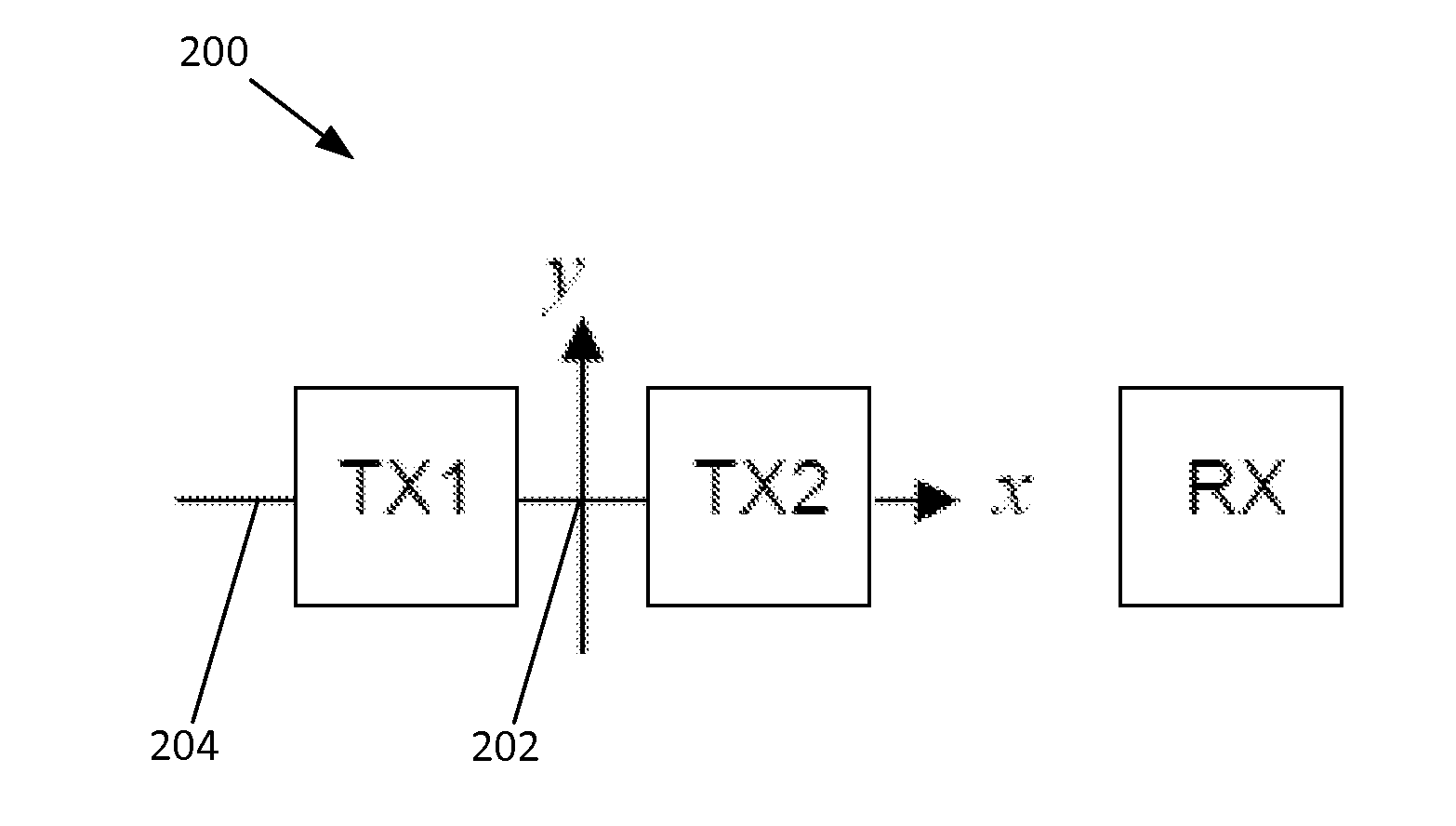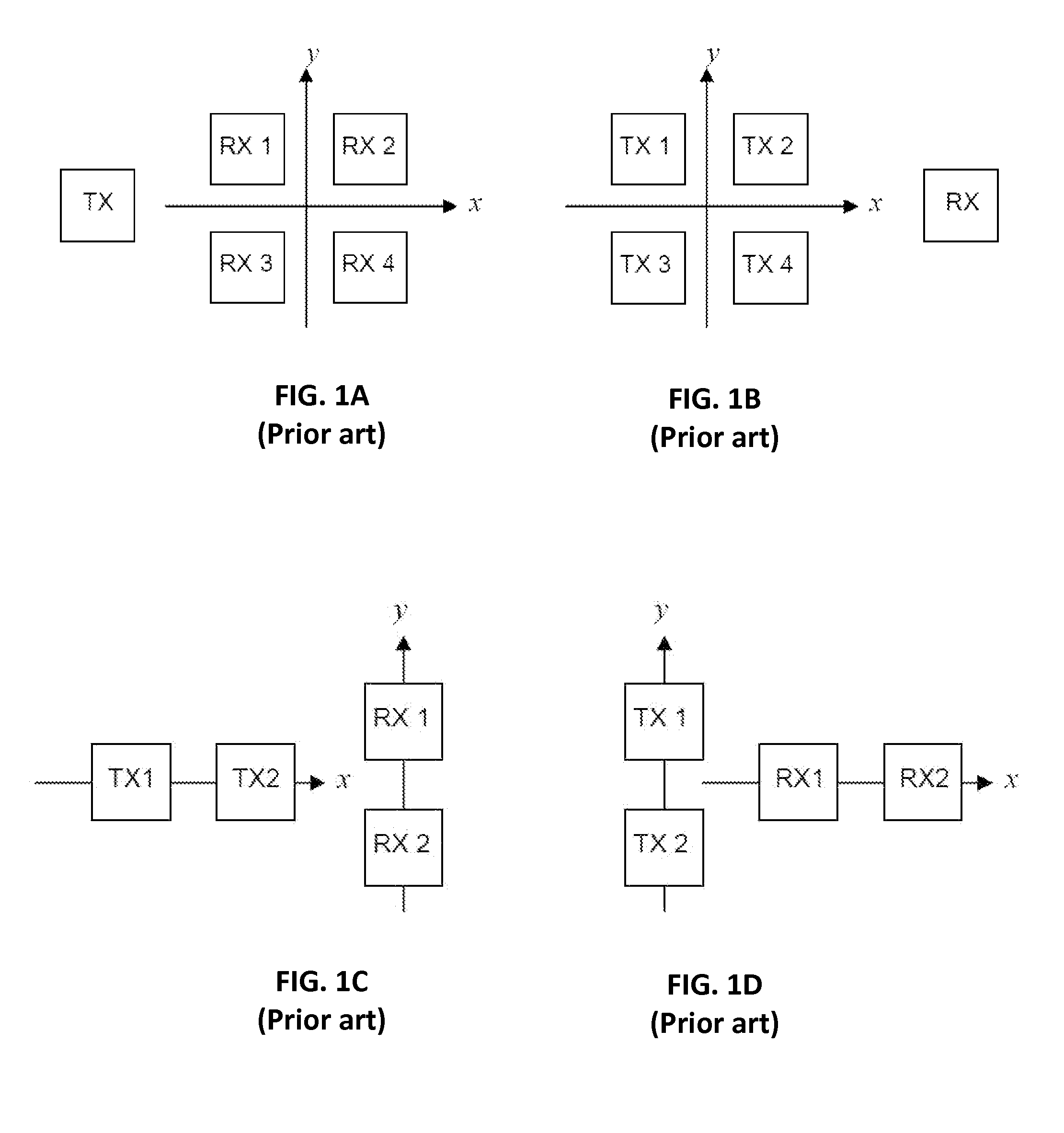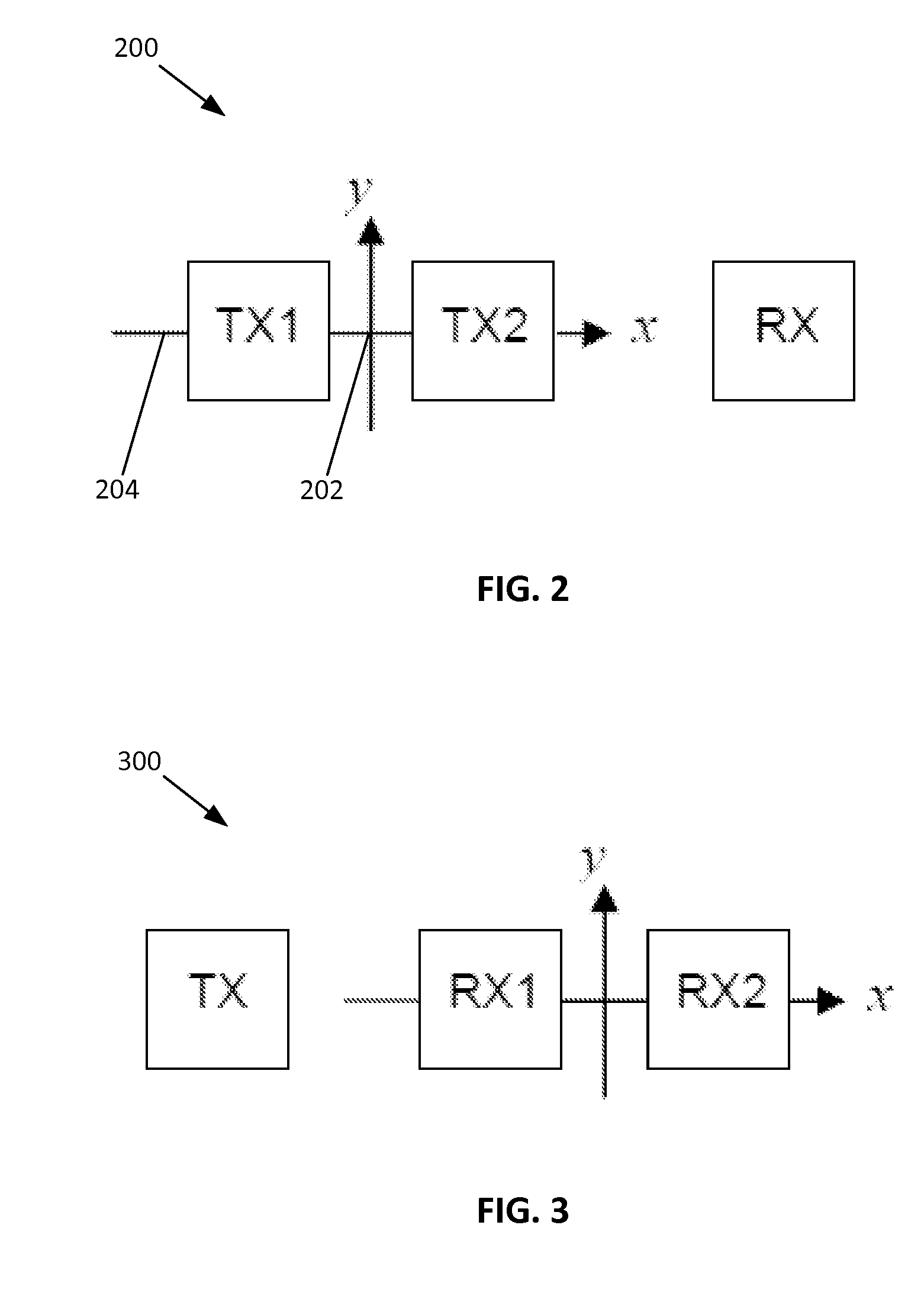Two-channel monopulse radar for three-dimensional detection
a monopulse radar and two-channel technology, applied in the field of radar systems, can solve the problems of too large and too costly for practical implementation in automobile applications
- Summary
- Abstract
- Description
- Claims
- Application Information
AI Technical Summary
Benefits of technology
Problems solved by technology
Method used
Image
Examples
Embodiment Construction
[0022]Referring to FIG. 2, a functional block diagram representation of a two-channel monopulse radar for three-dimensional detection 200 is shown. The radar 200 may generally include two transmitting antennas TX1 and TX2 and one common receiving antenna RX disposed in a substantially coplanar arrangement, such as on the surface of a dielectric substrate (not shown). The transmitting antennas TX1 and TX2 may be positioned on the focal plane of the radar 200 horizontally equidistant from the boresight axis 202 of the radar 200 along a focal plane axis 204 (the x axis in FIG. 2) that is perpendicular to the boresight axis 202. The transmitting antennas TX1 and TX2 may be spaced apart from one another a distance equal to about one half of one wavelength of the radar's center operating frequency. One of the transmitting antennas TX1 or TX2 may be vertically “squinted” at an angle of θ relative to the boresight axis 202, and the other transmitting antenna TX1 or TX2 may be vertically “sq...
PUM
 Login to View More
Login to View More Abstract
Description
Claims
Application Information
 Login to View More
Login to View More - R&D
- Intellectual Property
- Life Sciences
- Materials
- Tech Scout
- Unparalleled Data Quality
- Higher Quality Content
- 60% Fewer Hallucinations
Browse by: Latest US Patents, China's latest patents, Technical Efficacy Thesaurus, Application Domain, Technology Topic, Popular Technical Reports.
© 2025 PatSnap. All rights reserved.Legal|Privacy policy|Modern Slavery Act Transparency Statement|Sitemap|About US| Contact US: help@patsnap.com



